Following the commencement of the first phase of the Gaza ceasefire agreement on October 9, 2025, several notable Palestinian detainees are scheduled for release after decades of incarceration in Israeli occupation prisons.
According to Al Mayadeen, among the most prominent figures to be freed are Mahmoud Issa, Nasri Assi, Ayman Abdul-Majid Ashour Seder, and Baher Mohammad Badr, all of whom are considered symbols of steadfastness within the Palestinian national movement.
Commander Mahmoud Issa
A leader of the Palestinian Resistance and a senior figure in the military wing of Hamas, Mahmoud Issa, from occupied Al-Quds (Jerusalem), has spent 28 consecutive years in Israeli jails and is currently in his 29th year of detention.
Also Read: The Forty-Four-Days of Glory: Azerbaijan’s Struggle for Justice and Peace
Issa, 54, was sentenced to three life terms plus 46 years and is one of the longest-serving Palestinian detainees held before the signing of the Oslo Accords.
He endured one of the harshest isolation regimes in occupation prisons, spending 13 years in solitary confinement, 11 of them consecutively. Furthermore, his family was not permitted to visit him for most of this period, until a mass hunger strike in 2012 ended his isolation.
Born in Anata, northeast of Al-Quds, on May 21, 1968, Issa studied Law and Islamic Theology at Al-Quds University. He joined Hamas and later became a founding member of its military wing, establishing the first Hamas military cell in the Al-Quds region, known as Special Unit 101, which carried out operations, including attempts to capture occupation soldiers for prisoner exchange.
Issa led the operation that captured Israeli Staff Sergeant Nissim Toledano on December 13, 1992, intending to trade him for the release of Sheikh Ahmad Yassin. When the occupation refused the demand, Toledano was killed. The operation was deemed by the occupation as one of the most significant in the history of the Palestinian Resistance, prompting an emergency Knesset session.
Also Read: Palestine Solidarity Month: A Collective Movement for Al-Aqsa and Palestine’s Freedom
While detained, Issa authored several books, including “The Resistance: Theory and Practice” and “Lessons for the Aware: Stories from History.” He also published works on the interpretation of the Quran.
Before his capture, he worked as a journalist and served as the director of the newspaper Sawt al-Hurriyah wal-Haqq (Voice of Freedom and Truth), which was active in the occupied territories. Issa is currently held in Nafha Israeli prison.
Nasri Assi
Another key detainee expected to be released is Nasri Assi. Born on September 27, 1977, in occupied Al-Quds and raised in Beit Liqya near Ramallah, Assi was detained on July 17, 2005, just 45 days after his marriage.
Also Read: Hassan al-Turabi: A Controversial Thinker from Sudan
Accused of affiliation with the Izz ad-Din al-Qassam Brigades and involvement in fedayeen operations, Assi was illegally sentenced by the occupation to 18 life sentences plus 70 years in jail. He is held at Ramon Prison.
Assi was denied the chance to witness the birth of his first child and completed his high school education behind bars. His wife maintains hope for a future together outside the prison walls, a life they had only just begun.
Ayman Abdul-Majid Ashour Seder
Ayman Abdul-Majid Ashour Seder, a 57-year-old Palestinian from the town of Abu Dis, east of occupied Al-Quds, has spent nearly three decades in Israeli prisons. He was detained on May 13, 1995, and sentenced to life imprisonment plus an additional 25 years.
Also Read: Who Exactly is the RSF Group Shaking Sudan?
At the time of his detention, he was married and had a son named Muhammad, who was just four months old. Seder was accused by the occupation authorities of affiliating with the Izz ad-Din al-Qassam Brigades, providing maps and intelligence for resistance operations, and facilitating access for fighters to their targets.
He underwent intensive interrogation for over five months at the al-Moskobiya (Moscovia) detention center and was classified as one of the most dangerous detainees. Following his capture, occupation forces sealed his home in Abu Dis with reinforced concrete.
Despite meeting the criteria, Seder was excluded from the 2011 “Wafa al-Ahrar” detainee exchange deal.
Currently held at Ramon prison, Seder suffers from chronic kidney and joint problems. During the COVID-19 pandemic, he experienced a severe pulmonary embolism and was transferred to intensive care. Despite his poor condition, he continues to receive minimal medical care, reflecting the broader policy of medical neglect in Israeli prisons.
Also Read: The Two-State Solution (Palestine–Israel) in Historical Perspective
Within the prison, Seder is highly respected for his national commitment and his active role in the educational and organizational efforts of the detainee movement.
Baher Mohammad Badr
Hailing from Beit Liqya, Baher Mohammad Badr, born on April 16, 1978, was detained by Israeli occupation forces on April 7, 2004, at the age of 26, and has now spent over 21 years in jail. An active member of Hamas in his hometown, he was heavily involved in the Resistance during the Al-Aqsa Intifada.
The occupation accused him of participating in a series of operations, including the 2004 Tzrifin bombing, the Hillel Cafe bombing in occupied Al-Quds, and the Tel Aviv Central Bus Terminal bombing. After a prolonged search, he was eventually detained and sentenced to 11 life sentences.
Also Read: Enchanted by K-Dramas, Dragged into Slander: Time for Muslims to Rise!
Badr is currently serving his sentence in an Israeli prison, where he is regarded as one of the most prominent high-sentence detainees and a leading figure in the Palestinian detainee movement.
The Wider Context of Detentions
Israel currently holds approximately 5,000 Palestinians in its prisons, reflecting an ongoing mass detention policy targeting the Palestinian population. Among them are about 600 individuals serving long sentences, including multiple life terms.
The occupation also holds 425 Palestinians in administrative detention, imprisoned without charge or trial. Additionally, about 200 children and 45 women are currently behind bars, many of whom face harsh and inhumane conditions that violate international law.
Also Read: Creating Opportunity and Avoiding Misery; Lesson Learn on Waste Recycling Issue
In Israeli prisons, all Palestinian detainees are subjected to widespread and systemic violations, including torture, solitary confinement, and denial of family visits. The majority face legal harassment and policies aimed at escalating psychological and physical pressure.
First Phase of the Gaza Ceasefire Plan
Israeli media reported that the seven Israeli captives released by Hamas under the first phase of US President Donald Trump’s ceasefire plan in the Gaza Strip have been handed over to the International Committee of the Red Cross (ICRC) and are reported to be in good condition.
On Monday morning, October 13, the Israeli military stated that ICRC vehicles had arrived at the agreed location in the northern Gaza Strip to receive the released captives. This development follows days of negotiations mediated by Egypt, Qatar, and the United States. Furthermore, Red Cross buses are also en route to Khan Younis in Gaza to receive a second wave of Israeli captives.
Also Read: Between the Treaty of Hudaybiyyah and Ceasefire in Gaza
The Israeli military confirmed its readiness to receive additional captives, stating that more are expected to be handed over to the Red Cross later in the day.[]
Mi’raj News Agency (MINA)
Also Read: Peace Cannot Be Achieved Without a Palestinian State

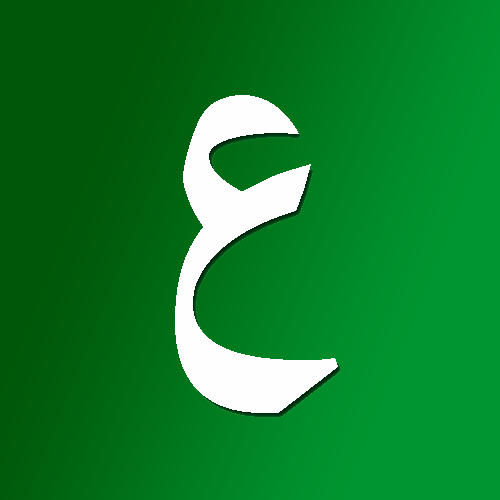






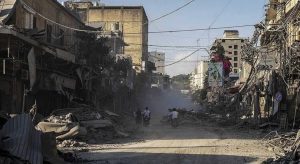
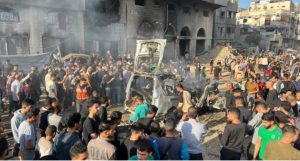

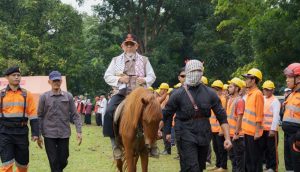
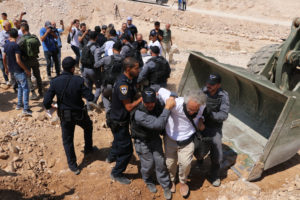
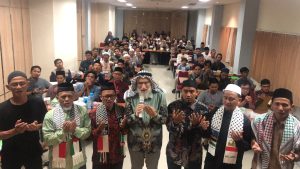
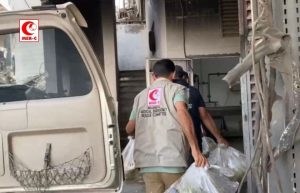

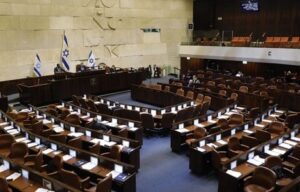

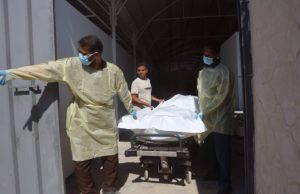



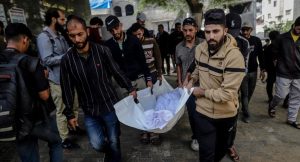
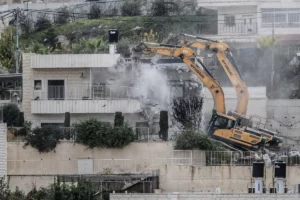
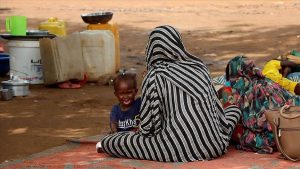


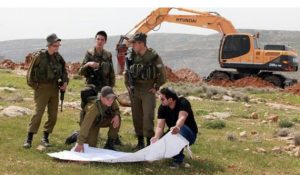

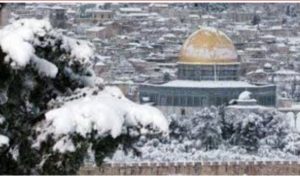

 Mina Indonesia
Mina Indonesia Mina Arabic
Mina Arabic